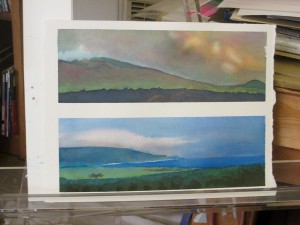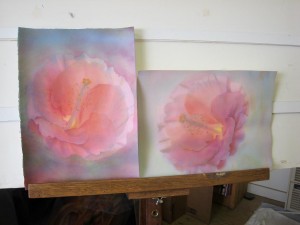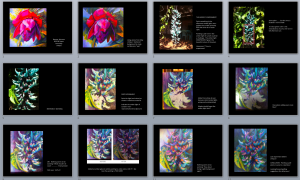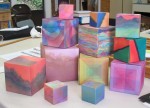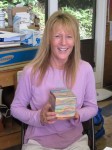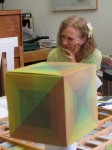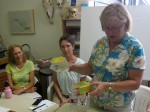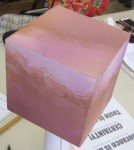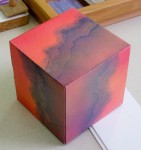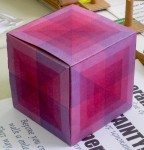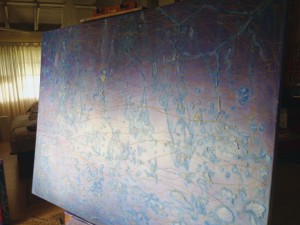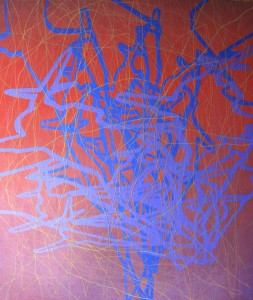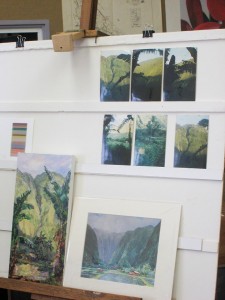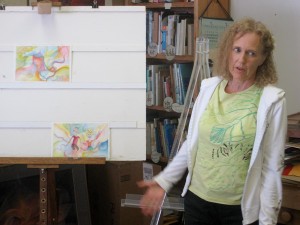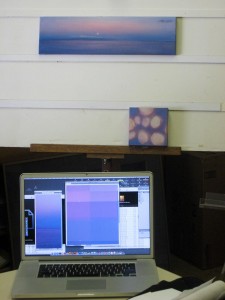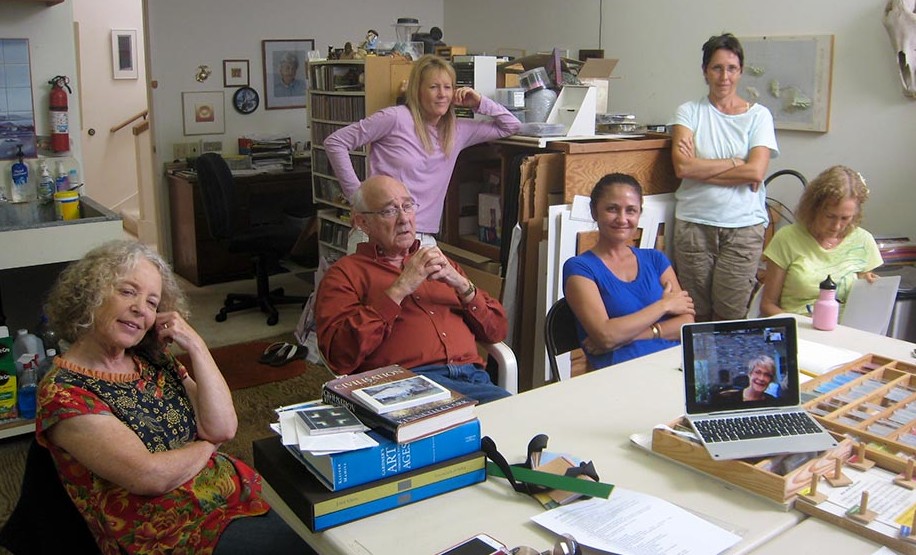
The spring 2014 Color Residual group: Patt, Dick, Kari, Melissa, Valerie, Emily. Not shown: Betty Hay & Cheryl. Guests: Bonnie (on iPad), Chris
The sixth color residual session was held on Saturday, June 28, 2014. The group shared their ongoing explorations of color relationships in various media.
Sharing and critique
- Patt brought in some tri-hue watercolor landscapes. She’d started some in a Hui class on painting a watercolor in three washes.
- Patt captured the different colors that result at different times of day, and successfully overcame a common problem when painting with tri-hue, of the primary colors being too dominant.
- Valerie explored layering color, and being bolder with color, in two tri-hue watercolors. Her focus was color, not subject matter or composition. But Dick urged her to also consider composition, to avoid having the background be a second class citizen. Some options are to add other flowers in the background, or crop in tightly. Every inch should count.
- Bonnie used PowerPoint to show her oil painting experiments since she was thousands of miles away.
Chris brought in a selection of cubes she assembles from tri-hue watercolors. She achieved some stunning color interactions.
- All Is Not Lost is another in Melissa’s “Agents of Change” series. She’s completed 8 works of a planned total of 12.
- The End of Going Everywhere, another in the “Agents of Change” series. Melissa has a concept and personal message about a serious subject, but doesn’t want to dictate peoples’ response, so her works are abstract and grounded in aesthetics.
- Betty Hay went back to a familiar scene and recreated a composition from the past, in order to explore it from her new awareness of color relationships.
- Emily felt blocked and frustrated, but once she explored that in a painting, she felt freed up and created a more satisfying abstract work. Dick suggested she inventory the “1s, 2s, and 3s”and try to use more tones (3s) to make the colors relate more.
- Kari brought in a small seascape and an abstract that she painted recently. She also shared her explorations of searching within photographs for abstract inspiration. Dick suggested she try some less familiar colors.
Looking ahead – future classes
Dick talked about his plans to offer an art history class, another color relationships class, and continuing the color residual critique group in the fall.
Dick considers knowledge of art history essential for any artist: “If you’re serious as a professional, you owe it to yourself to be aware of the options from the history of art. I can’t tell you what it opened for me. Keep asking ‘why?’ to get to the core – to get to the roots – of who you are. Art is too precious and important in our culture to do superficially.”
He’s started a list of people interested in the color class. If you know others, have them get in touch. Dick will interview everyone to ensure a good fit.
Most of the group was interested in continuing meeting for critique, after a summer break. We’ll need to add a few people, especially if anyone drops out. Members of this group will have the first option, then others in the 2013 classes and possibly others by invitation. New candidates will be carefully screened in order to maintain the sense of trust and openness this group enjoys.

